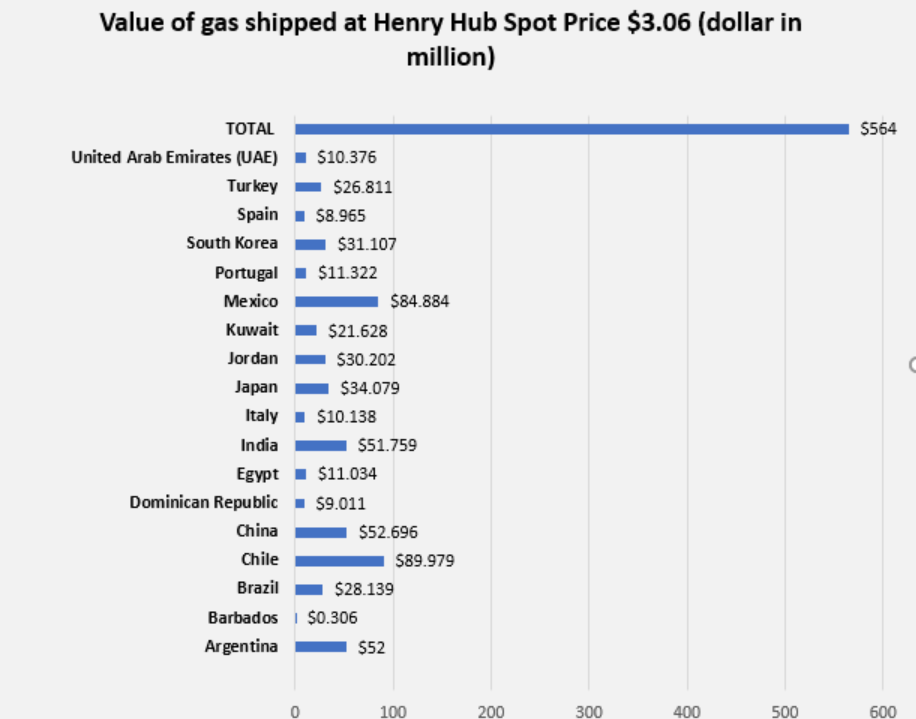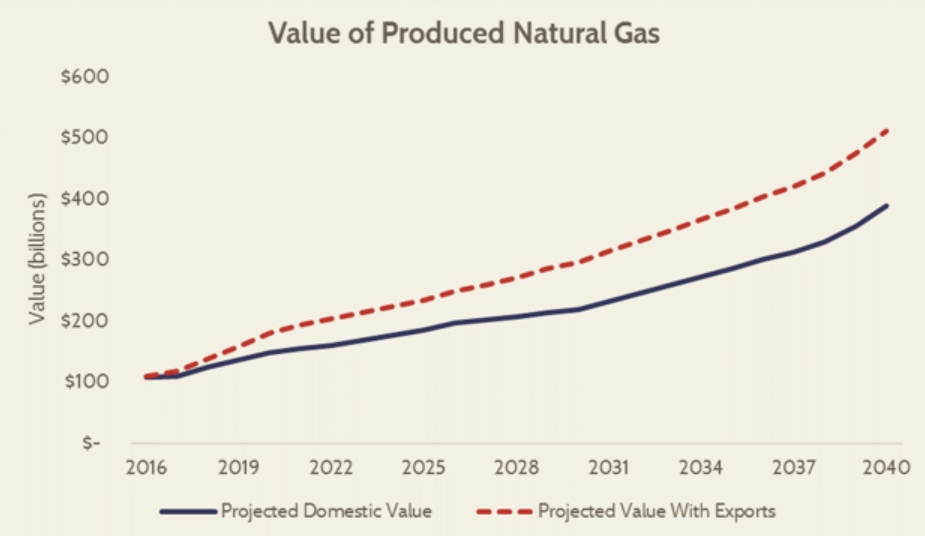Research
June 19, 2017
U.S. LNG Going Global
Summary
- With the Trump Administration in support of economically rational federal regulations, the U.S. Liquified Natural Gas (LNG) market is ripe with opportunity. When coupled with the tension surrounding Qatar (the largest exporter of natural gas in the world), this makes U.S. LNG production a very attractive option.
- In 2016, LNG exports from the U.S. totaled 184,141 million cubic feet with a value of roughly $564 million.
Currently the United States is exporting LNG to 23 out of 35 countries that can accept LNG transport vessels, a sharp change from this time last year. Last week, Taiwan received their first shipment of U.S. LNG, with more countries expected to be added to the list in the future.
Point of Origin
The Sabine Pass, located in Cameron Parish, Louisiana is the origin of U.S. LNG going abroad and, according to Reuters, had 18 ships picking up LNG for global delivery in May 2017. Sabine Pass, built and operated by Cheniere Energy Partners opened for business last February and has three liquefaction trains currently operating 0.65 billion cubic feet of gas (bcfd) per day and a fourth 0.65-bcfd train is anticipated to come on line later this year. There are two more potential trains in the works.[1]
Net Exporter
The domestic shale revolution has led to the U.S. recently becoming a net exporter of LNG for the first time 60 years. According to previous American Action Forum (AAF) research, since the U.S. started exporting natural gas in February 2016, the world market has seen a major shift as U.S. supply adds to the global mix. Before that time, global supply was dominated by countries such as Qatar, Malaysia, Nigeria, Indonesia, and Australia. U.S. gas is readily available and comparatively cheaper to produce, and is expected to take over the number 3 spot by next year.
In 2016, LNG exports from the U.S. totaled 184,141 million cubic feet. Using today’s Henry Hub Natural Gas Spot Price of $3.06[ii] per million British Thermal Units (MMBtu’s) implies a value of roughly $564 million dollars last year alone.
Countries that received LNG exports by vessel in 2016 were:
Data sourced from EIA
Between 2011 and 2015, Japan was the only recipient of a steady stream of U.S. LNG exports via vessel, with exports ranging from 8,200 and 15,200 MMBtu’s per year. Prior to that, the only form of LNG leaving the U.S. was headed to Mexico and Canada via pipelines.[iii]
Troubled Past
LNG exports faced an uphill battle in the past as there were many obstacles to overcome. According to a previous AAF research, U.S. policy did not allow export of natural gas without approval from the Federal Energy Regulatory Commission (FERC) and the Department of Energy (DoE). The approval requirement stemmed from a law passed in 1938 that requires these contracts to be deemed “in the public interest.” The challenges created by an ambiguous requirement being evaluated by regulators has led to an approval process which can take up to 4 years instead of 8 weeks. Recently, the Trump Administration voiced support for creating a more efficient process.
Promising Future
Another report by AAF estimates that the cumulative nominal value of natural gas exports between 2016 and 2040 will be $1.63 trillion USD. The graph below shows the estimated production value of domestically consumed natural gas versus the total value if exports are permitted.
Source: EIA International Energy Outlook 2016
AAF determined this value by applying EIA projections of natural gas production and consumption to projections of natural gas prices, as well as LNG price estimates we derived from applying a coefficient to oil prices (LNG prices are commonly indexed to oil).
AAF research estimates the annual trade value of natural gas exports will reach $31.8 billion annually by 2020, which would reduce our trade deficit by 7.3 percent. By 2026 the annual trade value would be $51.8 billion, and by 2040 it would be $123 billion.
In addition, the same report highlights that increased productivity in the natural gas industry is reflected in wages, which is the incentive for workers to transition from other sectors of the economy. The Bureau of Labor Statistics shows that the mean annual wage of workers in oil and gas extraction is $89,060—$40,740 higher than the national average of $48,320.
Conclusion
With the Trump Administration in support of a federal regulatory apparatus grounded in economic reality, the natural gas market is ripe with opportunity. Continued support for energy production and realistic regulations are essential to reap the benefits of domestic
[1] https://www.reuters.com/article/us-usa-cheniere-lng-idUSKBN1932IN
[ii] June 15, 2017 price MM
[iii] http://www.reuters.com/article/us-usa-natgas-lng-analysis-idUSKBN1700F1












